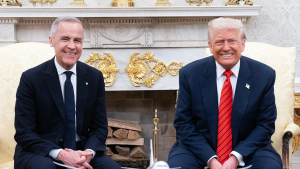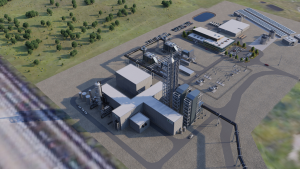Indigenous inclusion in the environmental sector is important, but first it’s necessary to break down the barriers in order to allow for more participation.
That was the message Yogendra Chaudhry, vice-president, professional services and ESG with ECO (Environmental Careers Organization) Canada, told those attending the Downstream: Student Speed Networking Event, held as part of the Canadian Water Summit in Niagara Falls, Ont. recently.
Through a series of seven 15-minute roundtable discussions, students, recent graduates and early career professionals met with and learned from industry experts in the environmental and water sector.
ECO Canada is an environmental careers organization that develops career resources for students, environmental professionals, industry and government.
Chaudhry focused on the trends, challenges and opportunities when collaborating with Indigenous communities.
Part of ECO Canada’s mandate is to develop Indigenous programs focused on creating training and employment for Indigenous participants in the environmental sector.
“When we did the labour market research we found Indigenous employment in the sector is very limited. One of the reasons is because many Indigenous participants do not have post-secondary qualifications and that becomes a barrier to finding a job,” Chaudhry explained.
The training programs range from three to 17 weeks. Participants receive practical experience, field work, classroom training, traditional Indigenous knowledge and when they graduate they are job ready and able to find employment, Chaudhry said.
To date, 4,500 students across Canada from over 250 communities have graduated from the program. Eighty per cent of those participants were able to find a job in the environmental sector.
Over the years, Chaudhry has worked in over 70 communities across Canada and has worked with many elders, business leaders, community leaders and youth. There is a challenge for adoption of anything new, whether it’s in an Indigenous community or not. The key is to identify the barriers and do what is needed to break them down.
“Indigenous inclusion in the environmental sector is very important in the sense there is a huge untapped potential which hasn’t been used by many employers yet,” said Chaudhry. “We are also seeing many post-secondary programs are working very closely with many communities. They’re opening campuses there because one of the barriers for many Indigenous participants has been they either don’t want to move out of the community or they cannot move out of the community and they don’t have a driver’s licence.”
Chaudhry said Indigenous participants need to be included on projects like mine remediation. Through the program, over 100-plus students in the Yellowknife-area First Nation communities have been trained for jobs like environmental monitors or site remediation assistants.
“We are working with contractors, project managers and subcontractors to provide them a pool of qualified employees,” said Chaudhry. “That has been very successfully working. We are trying to emulate the same model in the Yukon.”
Chaudhry said each community is unique and has their own challenges. The key is open communication, consultation and to be respectful of local culture.
Building trust is a starting point, he noted.
“Another barrier, and why so many women were not able to attend, so many of them were young mothers or single mothers,” explained Chaudhry. “We allowed them to bring small children in the class so during the breaks they are with their child.”
While communication can be difficult, Chaudhry said work with community elders, community leaders and the youth who are interested in the project.
“Those are the champions,” Chaudhry said. “Many times communication becomes difficult, especially if we are talking about scientific knowledge communication. Many Indigenous communities, they have their own ways of addressing things.
“A lot of times they have different unique solutions and those are the things when you start talking to them, they share. When you try to bridge that they become the champion and they become the spokesperson.”
Follow the author on Twitter @DCN_Angela.











Recent Comments
comments for this post are closed